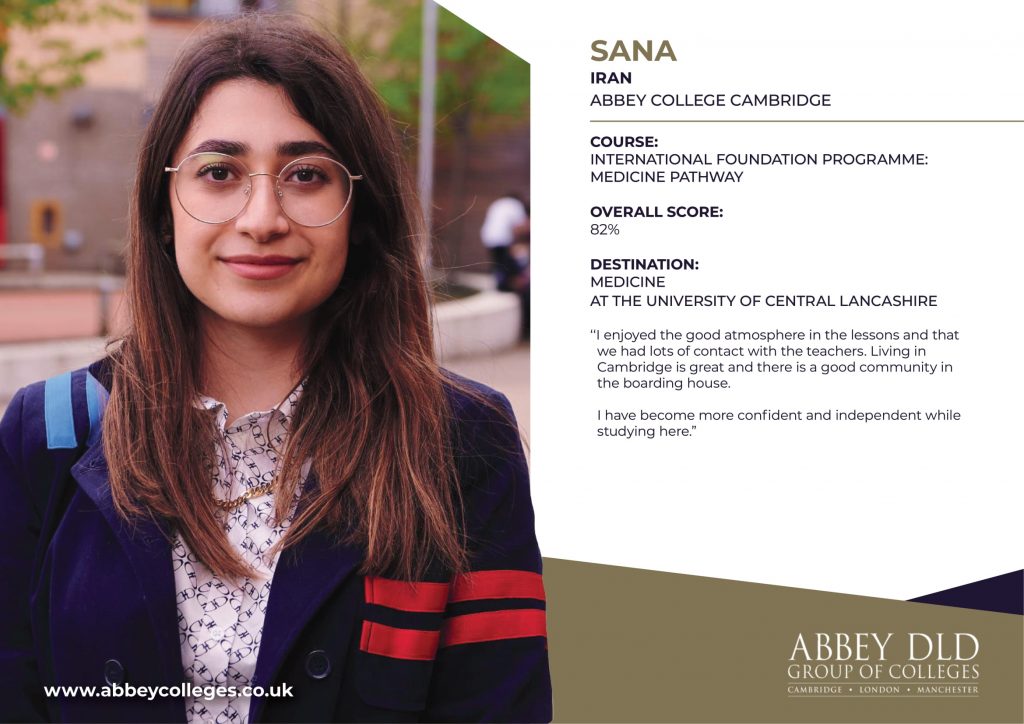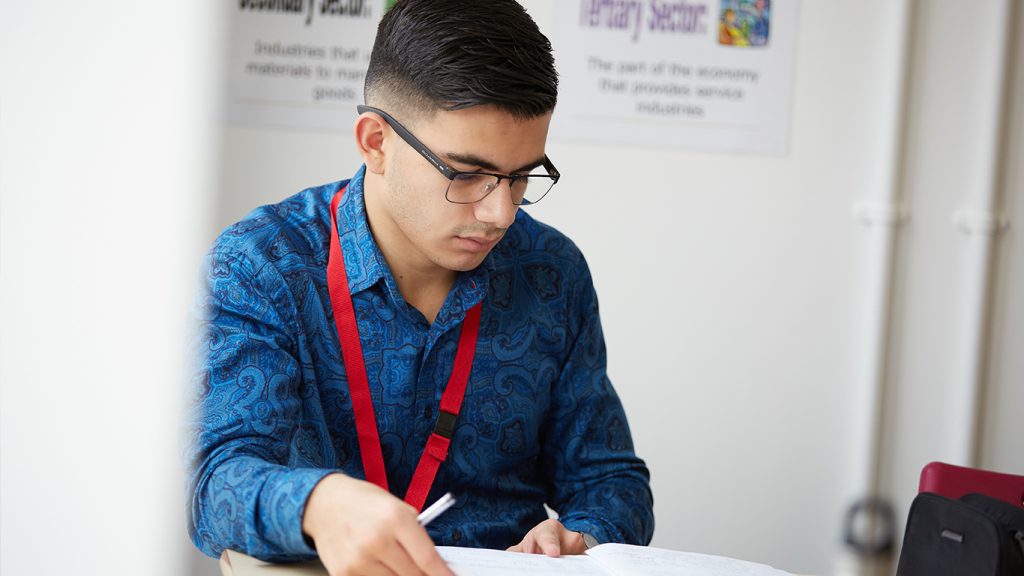COMPARING THE DIFFERENCES BETWEEN THE IRANIAN AND UK EDUCATION SYSTEMS: A GUIDE FOR IRANIAN STUDENTS THINKING ABOUT STUDYING IN THE UK.
16th January 24

Introduction:
Getting a good education is important for building a successful future. In this detailed blog, we will explore how education in Iran and England is both similar and different. This is especially useful for Iranian students thinking about studying in England.
Iranian School Education:
Children start formal school aged six in Iran and go through 9 years of compulsory education, split into primary for six years and lower secondary (guidance) for three years. During this time, boys and girls are taught separately and the education is free of charge but it’s also offered in private schools. Pupils can continue into the optional upper-secondary level for a further three years to achieve the High School Diploma. Progress to university is dependent on the results of this and the national university entrance examination called Konkur (ﮐﻧﮑور).

Pre-Primary and Primary Education in Iran:
Before starting primary school, Iranian children have the option of pre-primary education for those aged four or five. Though not essential, pre-primary education acts as a preparatory phase. The six-year primary education span, beginning at age six and ending at age eleven, establishes a crucial foundation. Introducing a final test at the sixth-year conclusion emphasises the system’s dedication to ensuring a strong grasp of fundamental concepts.
Iranian Secondary Education: Lower and Upper Secondary Levels:
In Iran, secondary education has two parts: lower and upper secondary levels.
Lower secondary education starts when students are 12 and lasts for three years. During this time, students learn a variety of subjects to build a strong foundation for upper-secondary education. At the end of lower secondary education, students take a regional exam called Emtehane Nahayi (امتحانات نهایی), which is organised by local education authorities. If they pass, they receive a Certificate of General Education (راھﻧﻣﺎﯾﯽ دوره ﮔواھﯾﻧﺎﻣﮫ), recognising their academic success.
Upper secondary education comes next and lasts for three years. Students can choose from three different study paths: theoretical, technical and vocational, or work and knowledge. In 2019, the pre-university level was eliminated, making it simpler for students to enter university based on their Konkur results and the High School Diploma.

Comparison with the British Education System:
When comparing the British education system, focusing on England, with the system in Iran it is interesting to see how they contrast. In Iran, primary education takes six years. In England, Key Stages 1 and 2 cover the same foundational phase for ages 5 to 11.
For secondary education in England, Key Stages 3 and 4 conclude with the General Certificate of Secondary Education (GCSE) exams at age 16. After that, there’s the post-16 phase, which introduces A-Level qualification. Key Stage 5 for 16 to 18 year olds is normally taught in a school’s Sixth Form or a college and most students who wish to progress to university will study three or 4 A Levels or a BTEC course. These are similar to Iran’s pre-university level, however, the examination and qualification structures differ between the two systems, highlighting the unique aspects of each educational journey.
Do you know?
The Abbey DLD Group of Colleges (ADLD) consists of three independent sixth-form colleges located in Cambridge, London, and Manchester, offering a wide range of academic study programmes.
At Abbey DLD we strive to achieve the highest academic standards whilst providing a welcoming, safe and high-quality learning and boarding experience for students from around the world. We aim to help our students achieve the academic success needed to progress to the UK and the world’s top universities, whilst also developing the personal skills and qualities to succeed at university and beyond.
Curriculum
The Iranian system integrates Islamic education, while the British system maintains a secular approach. Both systems introduce specialisation, with Iran offering academic and technical tracks and the UK providing diverse subject choices.
Iran relies on a national exam, whereas the UK considers A-levels or equivalent for university admission. Iranian high schools offer academic and technical tracks, similar to the academic and vocational pathways in the UK post-16 education.

Teaching Methods
The education systems in Iran and the United Kingdom display notable differences in their approaches. Iran’s system is traditionally more centralised, with a historical emphasis on rote memorisation and a teacher-centric approach. While efforts have been made to introduce interactive methods, the extent of their adoption may vary. In contrast, the UK’s education system is characterised by its diversity, encouraging various teaching methods such as group work, practical activities, and project-based learning. Emphasis is placed on fostering critical thinking, problem-solving skills, and creativity, with teachers enjoying greater autonomy. Both countries, however, share common goals of ongoing educational reform and preparing students for global competitiveness, recognising the evolving demands of the 21st century.
Assessments
The Iranian education system features a three-tier structure, with assessment relying on continuous evaluations throughout the academic year and culminating in crucial final exams. The pinnacle of assessment is the university entrance exam, known as the Konkur, which determines admission to higher education. In contrast, the British education system utilises the General Certificate of Secondary Education (GCSE) exams at age 16, influencing further education or employment choices. The subsequent Advanced Level (A-Level) exams, alongside alternative qualifications like BTEC and Foundation programmes, play a crucial role in university admissions. Unlike the Iranian system’s emphasis on a single high-stakes exam, the British system offers greater flexibility through diverse qualification options and a combination of continuous assessment and standardised exams.
British vs Iranian Education System Comparison Table
To provide a clear overview, the comparison table below highlights the key differences between the Iranian and British education systems:
| Education Aspect | Iranian School Education | English School Education |
Pre-Primary Education |
Optional pre-primary education (age 4/5) |
Reception (pre-primary) education (age 4/5) |
Commencement of Formal Education |
Age 6 |
Age 5 |
Duration of Primary Education |
6 years |
Key Stage 1 and Key Stage 2 (Total: 6 years) |
Lower Secondary Education |
Age 12 (lasts 3 years) |
Key Stage 3 (ages 11-14) |
Upper Secondary Education |
Age 15 (lasts 3 years) (Theoretical, Technical, Work and Knowledge Streams) |
Key Stage 4 (ages 14-16) |
Examinations/Certificates |
– Emtehane Nahayi (Certificate of General Education) at the end of lower secondary education |
– GCSE examinations at the end of Key Stage 4 |
– High School Diploma (Theoretical, Technical and Vocational, Work and Knowledge Streams) |
– Advanced (A) levels age 18 |
|
University Entrance |
Konkur examination for admission to tertiary education |
A-level results and UCAS applications for university entrance |
Do You know?
Every year, Abbey DLD Students achieve outstanding results and move on to join some of the world’s most prestigious and highly-ranked universities. In 2023, 41% of our A Level students and 38% of our Foundation students progressed to Russell Group Universities, and 14 of our students progressed to study at Oxbridge Colleges or Medical School.

Key Qualifications and Equivalencies:
In Iran, there are different types of education paths, each leading to specific qualifications. If you’ve completed the High School Diploma in the Theoretical Stream, this is equivalent to the academic standards of GCSE and Advanced A level in the UK. For those in the Technical and Vocational Stream with a High School Diploma, this is similar to the hands-on approach seen in BTEC First and BTEC National qualifications in the UK. Likewise, if you’ve gone through the Work and Knowledge Stream with the High School Diploma, this is also comparable to BTEC First and BTEC National qualifications. These comparisons make it easier for both Iranian and British education stakeholders to understand and acknowledge each other’s qualifications.
University Entrance in Iran vs. England:
In Iran, getting into university depends on passing a test called the Konkur. This test covers subjects related to what students wish to study. In 2012, the system was changed to make the selection process smoother. In England, getting into university usually relies on A-level results and sending applications through the university admissions system called UCAS. The different ways these systems work show the specific needs of higher education in each country.
Conclusion:
In summary, exploring the education systems in Iran and England shows a mix of flexibility, creativity, and a strong dedication to doing well academically. Iran’s system has changed a lot over the years, reflecting the dynamic nature of the country. For Iranian students thinking about studying in England, it’s important to have a good understanding of both systems to make informed choices. At the Abbey DLD Group of Colleges, we understand that students come from various educational backgrounds and we provide personalised support to help everyone succeed in their studies.
Please note that our three colleges, each with its own unique character, all share a common goal: to deliver outstanding educational and residential experiences for students aged 13 to 21. We do not provide university-level undergraduate or postgraduate education.
Blog Author

Wisam Afisa
Senior International Regional Manager (Middle East, Africa & Americas)
E: Wisam.Afisa@abbeydld.co.uk
T: +44 7935 133465
Get in touch today:
Since 1931, the Abbey DLD Group of Colleges has been synonymous with high-quality education, top university destinations, and enriching academic and pastoral experiences. Abbey DLD students graduate equipped with the skills to progress in their university studies and future careers, with friends from all around the world, and having made memories to remember for a lifetime.
Want to learn more about studying at the Abbey DLD Group of Colleges? Simply complete the form below and one of our admissions advisors will be in touch with you shortly.



